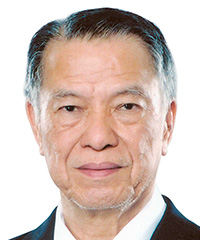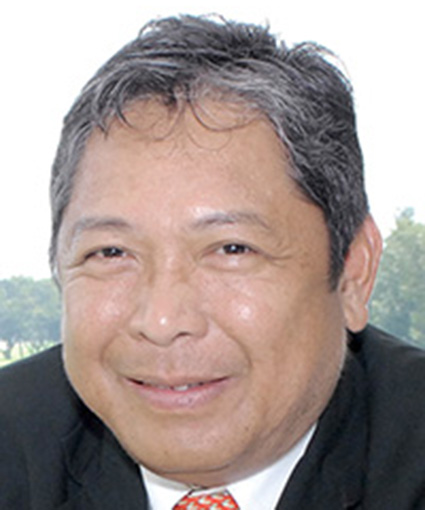News
Tycoon comes home to PAL
It was a case of back to the future for 80-year-old tobacco tycoon, Lucio Tan, last month when he paid $1 billion to buy the 49% stake he sold to brewing giant, San Miguel, in 2012. With PAL’s former president, Jaime Bautista, installed as general manager, Tan is building a rejuvenated Philippine Airlines
October 1st 2014
When Lucio Tan stood before Philippine Airlines employees – they fondly refer to him as the “Kapitan” - at a general meeting on September 15 it quickly became clear that this was going to be an emotional gathering. Read More »
 |
| 'PAL (Philippine Airlines) is more than an airline company to me. It goes beyond investment and business. PAL is like family to me' |
| Lucio Tan |
“Like many of you,” he told staff, “this is where I belong. This is where I spent many productive years – 21 years and counting. This is also where I will probably spend my last years. I am now 80 years old and in the twilight of my life. Yet PAL is never far from my thoughts. That is how dear PAL is to me. Whatever life’s problems, this is a place you can always return to and feel safe, secure and loved.”
This was why, he declared, that he decided to regain full ownership of PAL. “Because I love PAL and PAL loves me back. In today’s cold and formal business world, this kind of close relationship between a chief executive and his employees is rare,” he said.
After several weeks of tough negotiations, Tan finalized the deal that saw him pay $1 billion to Philippine’s San Miguel for its 49% stake, double the investment the brewing company paid in 2012 for its PAL share.
Tan remained majority shareholder when San Miguel bought in the airline, but the brewer had full management control. As soon as he was back in charge, Tan wasted no time in appointing the airline’s former president, Jaime Bautista, as general manager.
Bautista will be running PAL, but Tan has made it clear he will be an “active participant” in pursuit of the company’s goals. Bautista, who has served Tan in various capacities for nearly three decades, told Orient Aviation he shared Tan’s excitement about regaining full ownership of PAL.
“The first step is to conduct a review of our current situation, take an inventory of our current resources and then plan a new direction,” said Bautista. “The work ahead includes determining the best use of the new airplanes, as well as the most prudent choice of the next new destinations; while maximizing the benefits of existing service innovations.”
Beyond sustaining profitability, he added, PAL also needed to address its declining market share.
Bautista said the carrier might have to strike balance between reducing costs and improving productivity and employee performance. On a more positive note, there are promising opportunities for PAL to explore following the recent upgrading of the Philippines’ FAA category rating and lifting of the EU ban - of which much of the groundwork was done during our previous administration, Bautista said.
While PAL was being run by San Miguel and its enigmatic president, Ramon Ang, it embarked on a $9.5 billion re-fleeting program. Ang ordered 44 A320 family aircraft with options for 10 more, to be delivered through to 2020 and 10 A330-300s with options for another 10 for delivery from 2014 to 2016.
 |
| Jaime Bautista: back where he belongs as Lucio Tan’s right hand man at PAL |
However, it recently reduced the number of options for the A320s and the overall commitment for the A330s from 20 to 15. PAL operates 53 aircraft: six B777-300ERs, four B747-400s, eight A340-300s, 13 A330-300s, 12 A320-200s, six A321s and four A319-100s.
Bautista said the delivery schedule needed to be revised with the arrival of some of the A321s deferred to 2015 and 2016. “We may consider more B777s for our long haul flights. Our six B777s ordered during my incumbency are the major profit contributors to our long haul routes, especially to Canada and the United States,” he said.
Many industry insiders were surprised at the change of ownership because PAL’s business appears to be turning around. Despite tough market conditions and increased competition from low-cost and foreign legacy carriers, PAL posted a second quarter profit, to June 30, of $33.4 million, compared with a $24.2 million loss the previous year.
Revenue for the quarter climbed 47.4%, to $612.4 million, on new routes and increased demand. Analysts report that the result, coupled with Ang’s aggressive cost-cutting, has put the airline on track for a substantial full year profit.
Indeed, Tan has returned to PAL when critical developments at the carrier are taking effect. A downgrade of Philippines aviation by the U.S. Federal Aviation Administration (FAA), imposed in 2008, was lifted this year. The FAA ruling prevented PAL from expanding its U.S. operations or changing the type of aircraft it used on its U.S. routes. In April last year, a European Union (EU) ban on Philippine carriers flying into the EU was lifted, which allowed PAL to resume services to London.
Ang had announced plans to fly to New York this year and to add European destinations, including Frankfurt, Rome and Amsterdam to PAL’s network. Presumably, this strategy will have to be confirmed by the new management.
With a brighter future ahead, why did San Miguel sell? Ang has not answered that question directly, although he has indicated the brewer wanted to focus on buying into profitable foreign energy firms and said “oil and gas is our priority”.
“A good investment is a company with stable cash flow and consistent profit,” he told local media in a comment that seemed to suggest the airline industry was a little too volatile for his liking. Having said that, he added that there might be some interest in investing in a U.S. or Japanese carrier.
While PAL’s fortunes seem to be improving, achieving and sustaining profitability will not be easy for Tan, Bautista and their team. However, analysts approve of PAL’s focus on higher yielding, long-haul routes that should offset any weakness in domestic operations.
When Tan addressed the staff after his buyback, he said: “We have a big task ahead of us. “The challenges in the aviation industry are always formidable. But PAL is too important to the national interest to fail. PAL is important to every Filipino. It is not just another airline or corporation. It stands for the Philippines, here and wherever in the worvld we fly to. Let us, therefore, look to the future. Let us build a new PAL – an airline that all of us, the entire nation, can be proud of.”